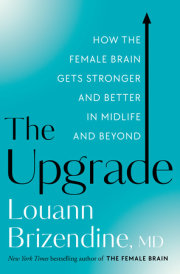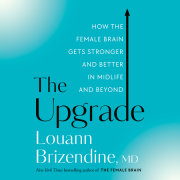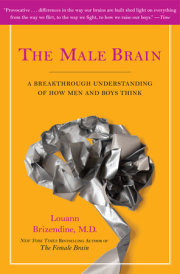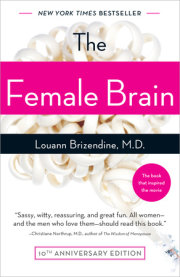Changing the ConversationChapter 1In 1980, while on a research program during medical school at Yale, a mysterious illness landed me in the hospital in London, where I was doing a student clerkship. I was weak, achy, and so low in energy it felt like I was going to die. They did every test possible but never came up with a diagnosis. No lurking cancer, no rare infectious disease, no organ malfunction, no autoimmune issue. Everything came back normal. At one point I realized that some visiting residents were probing my sense of humor to evaluate whether or not I belonged in a psych ward. They concluded I didn’t.
After ten days, I was released and returned to the United States for my fourth year of medical school. I was taken off the plane in New York in a wheelchair and paid for a limo back to New Haven. I appealed to the dean for some breathing roomf, but without a diagnosis, I was given no time off and got very little sympathy from faculty, family, or friends. My social support evaporated as people either didn’t believe me or began to see me as difficult.
I did what I had to do to muscle through. I took an apartment across from the hospital in order to be able to go back to sleep after 5:30 a.m. rounds. Somehow I made it through, wrote my dissertation, and graduated.
During surgical and internal medicine rounds, I watched doctors and doctors-in-training stride across hospital rooms at 6:00 a.m., lifting up gowns to begin their examinations without even saying hello to the human beings in the bed. They didn’t engage, they didn’t ask questions—not even “How are you today?”—and they didn’t seem to hear anyone but other doctors. And with the sickest of patients, when they ran out of tools, physicians disappeared, abandoning people who had lives and experiences and families much like their own, without so much as a farewell. They left that to the nurses.
Fresh off my own experience in London, I really knew what that felt like for patients. It’s why I decided to go into psychiatry. I refused to be involved in any specialty in which I wouldn’t have time to listen.
The brain, in fact the entire human nervous system of which the brain is a part, is hungry for connection. The feedback that we get from conversation, from sincere questions, tells us that we are accepted and that we belong. When we don’t get this essential social vitamin, we starve the circuits of the nutrients they need. We get sicker. Our mental acuity withers. Depression creeps into and attacks our system.
Being abandoned, by doctors and by our social support, teaches us to abandon ourselves.
This is what made me start the Women’s Mood and Hormone Clinic at UCSF in 1994. I wanted to give women what I didn’t get. And when I worked with women as they shifted out of the reproductive phase of life and into uncertain territory, I wanted to know the answers to the questions “How are you feeling?” “What are your days and nights like?” “What scares you?” “What’s making you happy now?” and, most important, “Can you tell me your story? I want to hear everything.”
For thirty years I have been listening hard to the stories of joy and loss, discovery and fear, freedom and disorientation from women in Transition. And for most of that time, I have been sitting at the vanguard of research at UCSF’s medical school, where I’ve had a front-row seat to groundbreaking, impactful science. I’ve witnessed the emergence of real actions we can take to come into our fullness, with an increasing number of doctors and organizations focused on exactly this. I wish they were emerging faster, but the more we know, the more we ask for, the more medicine will respond with what we need.
Who Will We Be?We are asked as children who we want to be when we grow up, and those responses are shaped by the values of the culture that we internalize, or introject. We’ve lived lives we wanted to live, but also the lives we thought we were supposed to manifest. For many of us it’s been marriage or marriages, children or no children, careers outside or work inside the home. So much of it swept us up in a blur; so much of it is still tugging at us to fill specific roles, especially children and grandchildren. But now is the time to ask yourself, Who do you want to be today? Who do you want to be in your transition and beyond? You have decades ahead of you following the reproductive phase of life. Who do you want to be as you enter the fullness of your age? Is it a leader, an artist, a visionary, a mentor and sponsor? Is it a life filled with freedom, purpose, and focus unencumbered by the responsibilities of an earlier time? These are some of the desires I hear from women. I am obsessed with how they answer this question, and how the Transition and freedom from the fertility cycle helps us in forming a new self-image, discovering our authentic selves, and realizing our new opportunity.
I followed the science, and what I discovered is that this phase is an opportunity to grow into the wisdom and strength and resilience we’ve been primed for across our life span. Just as the female brain is wired for connection and communication at birth, the Upgrade allows those circuits to choose new synaptic partners that have nothing to do with the hormonal drives that dominate decision making during the reproductive phase. Changes in circuits can build a stronger and more confident sense of self, making the wisdom gained from a lifetime of experience a neurological reality.
The Transition can last between two and fourteen years. The unfolding of the Upgrade can take place in a decade and continue over the course of forty or fifty years. It’s different for every woman.
From my life, the lives of the women who’ve come to see me, my friends, and the research, I know that freedom from the reproductive phase is an amazing, extraordinary, and now much longer period of a woman’s life than ever. I think the Upgrade can even redefine what it means to be female. Here’s what’s possible with the Upgrade:
Directness: The massive decrease in estrogen waves changes the way the brain handles anger and disappointment. Whereas the younger female brain diverts the impulse to stand up for herself and for the values she holds dear, biologically trying to impose silence, new hormonal influences unleash those circuits. The force of the impulse to speak out will feel like driving a Maserati for the first time—it takes a little while to get used to the power. But once you do, and you see that the world didn’t end, and there is no going back, nor would we want to. We shake up the status quo, redefine the rules of relationship, speak up for what’s right.
Focus: The anxiety-provoking stress of multitasking is over. Multitasking and anxiety go hand in hand. We don’t know which comes first, but we do know they amplify each other. With the Upgrade, we do one thing at a time. This isn’t a deficit. It means you will become more engaged, more thorough, better able to concentrate. It means by being able to keep your eye on the prize, you can be more effective than you’ve ever been in your life; and you will no longer hesitate to tell someone who is interrupting your flow to come back later.
Validation from within: The great benefit of the cloak of invisibility of age is that we find our authenticity within. No longer driven by fertility hormones to seek external approval, we behave differently and others respond to us differently. Many find that men will listen to us not because of how we look but because of our wisdom and experience.
The return of fearlessness: In the Upgrade, the female brain is no longer stressed by its wiring being hormonally altered by 25 percent every month, and so the freedom to solidify its circuitry allows easier access to feelings of firmness and conviction unlike at any other time in a woman’s life. Less concerned than ever with pleasing others, women can use this moment to build a stronger and taller platform from which to see farther and speak out.
Expansiveness: As the window gets shut tightly on the hormone storm of the Transition, the brain circuits have the opportunity to quiet. The hormonal motor that drove the hamster wheel of worry is disconnected at this time, or at least you can now identify an off-ramp. If we learn to tune out everything that interrupts the quiet—judgment, self-flagellation, loops of rumination about situations past, present, and future—a new world of options opens up. The listening circuits for hearing your own mind as well as understanding the thoughts and feelings of others can be recruited. The brain circuits for gratefulness emerge, and knowing how to optimize them determines whether you age with vitality and curiosity or become prone to depression. Compassion for self and others activates joy circuits you never knew you had, and these positive moods create the basis for robust brain health.
Copyright © 2022 by Louann Brizendine, M.D.. All rights reserved. No part of this excerpt may be reproduced or reprinted without permission in writing from the publisher.








